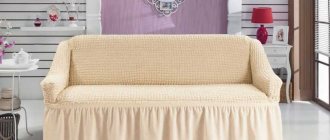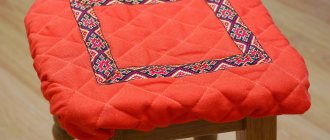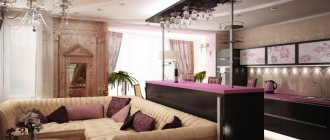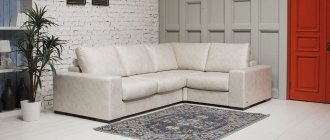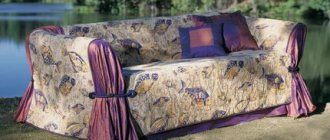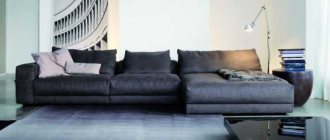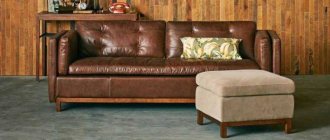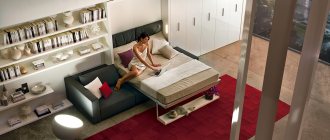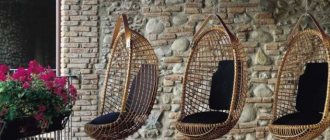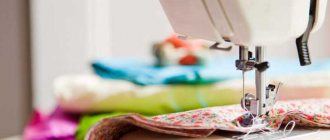0
34271
New removable European covers not only protect the upholstery of sofas and armchairs, but can also completely change the interior. The products have recently appeared on the Russian market; they have universal sizes and a variety of colors. Using European covers for upholstered furniture, it is possible to transform a room and add bright colors to it. Easy care and affordable price are the advantages of these products that consumers will definitely appreciate.
Benefits and Features
European-style covers for upholstered furniture are truly universal. Models are distinguished by purpose (chair or sofa) and size. At the same time, the purchased Euro chair cover is suitable for any models of chairs, regardless of their size, back height or seat width. Also, the selected eurocover for a two-seater sofa without armrests can be used to protect any furniture from this category, regardless of its upholstery materials, the presence or absence of legs. This feature of European covers is achieved through the use of auxiliary elastic bands. They allow you to cover old furniture with a cape so that there are no waves or constrictions on its surface. In addition, European covers are made from wear-resistant fabric, which will retain its original appearance for a long time.
Advantages
The main advantage of using a Eurocover is its efficiency. Thanks to such a cover, you can easily and quickly update the look of old upholstered furniture without changing its upholstery. Other advantages of the products include:
- ease of choice (by type and size);
- reliability (the fabrics used for sewing covers are in no way inferior in strength to furniture upholstery, they are resistant to mechanical stress);
- ease of cleaning (in case of contamination, owners will need to remove the cape and wash it in accordance with the manufacturer’s requirements);
- ease of putting on (most models can be put on upholstered furniture in just 5-10 minutes);
- variety of cover designs (due to the use of different fabrics and tailoring in different styles).
Despite the high efficiency of the Euro-cover, it will not be able to hide the unevenness of damaged leather or suede, worn-out (or sagging) filling of upholstered furniture.
Flaws
A significant drawback of Euro-covers for upholstered furniture is their high cost. High-quality and durable models, resistant to damage, which can actually be used even in homes where animals are kept, are expensive. Also, Euro-covers are not suitable for use on leather sofas and armchairs, since they slide over the upholstery without a strong hold. Some buyers find disadvantages in the monotony of the interior created by the use of durable covers. But such a problem can be easily solved by “decorating” upholstered furniture with sofa cushions.
One of the disadvantages is the large number of cheap crafts. Capes that cost less are sewn from less durable fabrics and, accordingly, are quickly wiped off and covered with puffs. Therefore, you should choose models with special attention.
Materials and colors
Euro covers are valued for their quality, but the textiles themselves that are used to make them may differ (in texture, color, with artificial or natural fibers). The peculiarity of such capes is that the material does not lose its shape, is hypoallergenic, pleasant to the touch and airtight. It is important to combine the color scheme of the products and the style of the interior. Delicate tones are inappropriate for a high-tech room, but are perfect for Provence or country. Wine and rich colors are combined with minimalism, loft and modernism, for example, light green capes are too bright for most rooms, but they are quite suitable for Art Deco.
Classic interiors “welcome” stripes or small flowers, this softens the bulkiness of the decor. A range from bright green to blue (in combination with snow-white or purple) is suitable. Baroque looks good with dense fabrics that create the effect of expensive options, such as jacquard or chenille. Country suggests a natural palette: beige, shades of the sky, greenery. Modern goes well with microfiber.
High tech
Provence
Country
Minimalism
Loft
Modern
Art Deco
The highest quality European covers with increased density are made from jacquard and chenille. Microfiber has the greatest elasticity. If you want to focus on an unusual design, pleated or “Fantasy” options are preferable. Some fabrics are especially soft, first of all, we are talking about “plush” chenille, microfiber, and jersey.
Rules for cleaning leather furniture at home, review of products
Features of materials used for manufacturing:
- Jacquard is a textile with a three-dimensional pattern that is created using a complex weave. Consists of cotton threads with the addition of synthetic fibers (polyester, elastane). Jacquard throws look like real upholstery. The material is scratch-resistant, elastic, and holds its shape well. Silver and gold threads are often woven into the fabric. The disadvantage of the material is its high cost; natural material is more expensive than synthetic material.
- Chenille - its surface is not smooth, but a little fluffy. The material is velvety and soft to the touch. Chenille composition: acrylic, polyester, cotton. The threads are closely intertwined, it is difficult to damage them and disrupt the structure. It is characterized by increased stability (thanks to acrylic and polyester) and can withstand significant loads. Features of chenille: bright colors, original pattern. This soft Euro slipcover fabric has a plush surface that adheres snugly to your furniture. Cons: snags appear quickly; need to be cleaned without using aggressive detergents.
- Pleated - a cover made from it is primarily distinguished by its unusual design (many models have decorative skirts along the lower edge). Suitable for country, ethno, fusion styles. The fabric is smooth, even, plain or with a small pattern. The pleated stretches well and is resistant to damage. The main disadvantage is difficult care.
- Microfiber is a fabric made of very fine fibers, dense and non-fading. It produces maximally stretchable capes, suitable for products of non-standard shape. It is highly durable, practical, and does not roll down. It does not create snags, and odors are not absorbed into the fabric. Some models have a pearlescent sheen. Cons: attracts dust and lint, is not cheap.
- Jersey is an elegant fabric with a soft, smooth texture. This is a stretch material (composed of polyester and elastane). The density of such furniture capes is average, sometimes it has antimicrobial impregnation. The material is easy to care for, hardly wrinkles, breathes well, drapes, and can be washed in a machine. The downside is the high cost.
- With kanekalon fibers - a fabric that prevents the spread of fire. It contains refractory kanekalon fibers. If sparks hit the surface, the material becomes charred and does not ignite. At the same time, it is valued for its environmental friendliness and waterproofness. The material does not absorb liquids, all drops linger on the surface and are easily removed. The disadvantage is that the cost of the fabric is higher than average.
Recently, Euro-cases “Fantasy”, made from various materials, have become popular. This is the name of the classic models that have a “skirt” on the lower edge of the product. A stretch cover of this type looks impressive. It is recommended for styles where smooth lines are acceptable, for example, Provence. Minus - not suitable for all interiors.
Master classes on sewing covers for upholstered furniture for needlewomen
Jacquard
Chenille
Pleated
Microfiber
Jersey With kanekalon fibers
"Fantasy"
Materials
Modern Europlaids are made from the following types of fabrics, differing in their characteristics and features:
- chinil: characterized by a soft surface, with different types of weaving it may have virtually no relief or be similar to plush;
- jacquard: dense material with patterned weaving, well suited for use in apartments where pets are kept;
- microfiber: soft and elastic fabric, the best option for protecting the upholstery of the sofa and creating special comfort in the relaxation area;
- pleated: distinguished by a dense weave of threads, has an inconspicuous pattern;
- polyester: a material with a fairly tight weave, but little wear resistance.
How to put a cover on a sofa and chair
Covers for sofas/furniture are attached very simply - tucked into the middle of the sofa or chair, and then aligned along the edges. Euro-covers are sold in special packages that indicate how to put the cover on the sofa. The process of stretching a Eurocover depends on its type, but most often it has the following sequence:
- Take the case and seal out of the packaging and straighten them out to get a better look at the features.
- Take a close look at the thin seams and identify the outside.
- Place seals on the fold of the seat and backrest to ensure the cover fits firmly.
- Place the center against the sofa or chair and hold the edges. It's better to do it together.
- First fix the corners on the back.
- Then straighten the seat and secure it at the bottom with an elastic band or fastener.
- Straighten and adjust the cover so that the seams coincide with the corners of the furniture.
The process of attaching the Eurocover can take from a few minutes to half an hour, but it will not be tedious. If you encounter any difficulties while tightening, make sure that you are holding the cover the correct way and read the instructions again. The complex shape of a product can sometimes be confusing at the stage of determining the center or sides.
Color varieties
When choosing the type of colors and patterns for a sofa cover, we must not forget about the features of the room for which the model is being selected. Plain products are optimal for interiors that include patterned trim and eye-catching decor. The most fashionable shades include beige, burgundy, dark blue, light blue and light green. These colors will harmoniously fit into the design of the room and highlight the relaxation area with a sofa. Many europlaids are made from fabrics with patterns: they are more suitable for rooms with a neutral design. Models with large ornaments, in the same color scheme as the background, are suitable for any room. Small, discreet designs and ornaments will be appropriate in both small and large rooms. The presence of a contrasting combination of backgrounds and patterns, regardless of their size, allows the use of Euro-covers in spacious rooms.
There are special “children’s” colors of European covers with animals and plants.
Choice according to interior style
Observing the basic features of the style in which the model will be used will help you choose the right eurocover for your home from the catalog. You can easily select a product using the following directions:
- urban and modern: models without frills in light gray, gray-lilac or light blue colors are good;
- Art Deco: dark models with contrasting light patterns will emphasize the style; it is possible to purchase a model with a frill;
- classic: models in dark green, beige or brown with any tailoring are suitable for the direction;
- Scandinavian: a light gray or white European-style case without frills will complement this style well;
- Provence: light models with dim stripes or small floral patterns are preferred;
- rustic, country and loft: beige, light or rich brown covers are ideal for these styles;
- modern and high-tech: for discreet styles, it is better to choose a dark brown or black case with minimal relief.
Types and sizes
The main difference between the European seat covers produced is their stylistic presentation. Such models can be complemented at the bottom with a neat frill or have a flat side at the bottom, equipped with an elastic band. For sofas, a larger number of European covers of the following types are produced:
- for models without armrests;
- for sofas with armrests;
- for corner upholstered furniture.
The sizes of the covers should be selected according to the size of the seat itself. There are Euro-covers for 2-seater, 3-seater and 4-seater sofas. For corner models, products designed for 4-seat upholstered furniture are suitable. Therefore, when selecting the required European cover for a corner, you don’t have to take into account which side the long part of the seat is located on. The only exceptions are designer sofas made in non-standard sizes.
Types of sofa covers
Types of covers for a sofa or chair differ in size, texture and color. Also, depending on the manufacturer, you can purchase a ready-made cape or have it sewn to order. This allows you to buy a Euro-cover for a sofa of any shape.
The most options on the market are for book sofas. Such cases are easier to produce and more convenient to use. A strong elastic band is often used to secure it.
For sofas with ottomans, you can also choose special corresponding models. Before purchasing, you must carefully consider the measurements of the furniture.
How to choose and use a case
A correctly selected Eurocover model guarantees its appropriate appearance in a specific interior and long service life. It is recommended to select products according to the following criteria:
| Type of model and its dimensions | Incorrectly measuring furniture will lead to the purchase of a cover that will not fit tightly to the base or will not be able to cover a large sofa. |
| Material | For apartments where animals are kept, it is worth choosing the densest fabrics with increased wear resistance. |
| Stylistics and colors | The chosen model should fit well with the color scheme of the room and complement it attractively. |
After purchasing, it is recommended to wash the cover and only then put it on the furniture. This will allow you to prepare the purchased Eurocap for home use.
How to take measurements correctly?
If you can find a suitable model of European cover for an armchair and sofa by simply assessing its appearance, then you need to be very careful when choosing a product of the appropriate size. To select the correct cape, measure the back of the furniture (top or front). It is better to use a tape measure for work or measure with a centimeter (the help of a second person may be required). According to the obtained measurement, the model is selected:
- with a back length of up to 1.6 m, a Euro-cover for two-seater sofas is suitable;
- a back length of about 2.2-2.5 m will indicate the need to purchase a model for a three-seater sofa;
- If the back length is about 3.5-4 m, you should purchase a Euro-cover for a four-seater sofa.
The sizes of covers for corner sofas are selected in a similar way: depending on the sum of the lengths of the “large” and “small” backrest.
How to wear?
The instructions for putting on European-type covers are quite simple and do not require any special skills. If the sofa is close to the wall, then you must first move it away to put on the cover. The work itself is carried out according to the following scheme:
- The cover unfolds on the surface of the sofa.
- The upper part of the cover is draped over the back, then aligned along one corner, stretched across the back and aligned along the second corner.
- The armrests are covered with fabric: you need to cover them with specially designated volumetric “pockets”.
- The fabric is leveled behind the back of the sofa and along the entire perimeter at the bottom. For corner sofas, there is an elastic insert, which, after straightening the fabric, is tightened and fixed on the inner leg (located between the short and long parts of the sofa).
- Between the seat and back, as well as the seat and armrests, rollers or parallelepipeds made of foam rubber are pushed.
Care Tips
Despite all the practicality of European covers, only proper cleaning and washing will help preserve their original appearance and condition. Basic product care requirements include:
- Removing dust and hair with a vacuum cleaner without using hard brushes (they can damage the fabric).
- Wash by hand or on a gentle cycle in a washing machine without using bleach. It is also recommended to wash the covers without other items (even identical in color).
- For soft “fluffy” covers, washing is carried out only after turning the product inside out.
- Drying of products is carried out naturally. Euro covers should not be dried over heating devices or radiators (otherwise they may become deformed).
- There is no need to iron Euro covers. As a last resort, you can only iron the bottom frill by setting the ironing mode appropriate for the specific fabric.
How to choose a eurocover for a sofa?
In order not to make a mistake with the appearance and size, you need to know what to look for when buying a really high-quality item that fits into the interior. Euro-covers for sofas and armchairs are selected taking into account the following rules:
- Correct measurement of furniture dimensions.
- The appearance of the eurocover should not stand out against the background of the design and style of the room.
- The cost must correspond to the quality of the product.
- The material of the cover must be resistant to wear, dirt and other negative factors.
Euro sofa cover - dimensions
To obtain a high-quality case for upholstered furniture, you need to take accurate measurements. Unlike a regular cover, the euro does not require exact measurements of any dimensions other than the length of the sofa. All other parameters, protrusions, corners, armrest and back height do not matter due to the presence of elastic. Let's look at what sizes are available:
- For a two-seater sofa, an option with parameters from 120 to 160 cm is suitable.
- A three-seater sofa requires a Euro-cover with a length of 160 to 250 cm.
- For the corner option, the parameters are about 3-5 m.
Euro sofa cover – colors
A variety of materials will help you choose a color suitable for any interior. Euro sofa covers can be plain or with any pattern. When choosing one option or another, the main thing is that it matches the style of the room in which the furniture is located or becomes a bright spot against the general background. It is important to pay attention to the quality of the design and paint application so that after the first wash the product does not lose its attractiveness.
Euro-cover for a corner sofa
Due to its size, such furniture can accommodate many people, which leads to its rapid contamination. If earlier blankets or capes were thrown over the surface of sofas, which constantly moved off, causing inconvenience, today special cases are used for this. When buying a eurocover for a corner sofa and armchairs, it is important to pay attention to what model it is intended for (right-handed or left-handed). Nowadays, you can find furniture cases on sale from the following fabrics: chenille, jacquard, polyester, microfiber, pleated and others.
Universal euro sofa cover
Having decided to save on reupholstering furniture, and at the same time not spend a lot of money on ordering an individual case, many opt for this option. A universal euro-cover for a corner sofa or other furniture options is suitable for different models, and it will not slip during use. By purchasing a high-quality case, you can be sure that the fabrics used will not allow it to wrinkle, will prevent shrinkage during washing, and they will not fade or become thin.
Eurocover for a sofa without armrests
Even for this type of furniture, manufacturers have developed a special type of case. Its advantage is the simplified task of tensioning. The presence of a large number of rubber fibers makes furniture dressed in such a cover look stylish. The eurocover for a corner sofa without armrests differs from the usual version in length. As with the previous options, there are different models in different colors.
How to make it yourself
Making Europlaid yourself takes a lot of time. It is recommended to use microfiber for work. Sewing a European cover with your own hands is carried out according to the following instructions:
- The distance between the armrests is measured at the junction of the back and seat (even if the bottom or top is slightly wider than the center, the microfiber, due to its elasticity, will stretch and fit as it should). This measurement will be the width of the desired canvas.
- The height of the sofa at the back, the height and thickness of the back, the width of the seat and the height of the sofa from the floor to the edge of the seat are measured (the height of the legs is not taken into account). The sum of the numbers will become the length of the required canvas.
- Based on the measurements obtained, a piece of fabric is prepared.
- The width of the armrest and its length are measured (height from the floor to the top + thickness + height from the top of the armrest to the seat). Based on the obtained dimensions, 2 pieces of fabric are prepared - “capes” for the armrest.
- A pattern is made of the end of the armrest (rectangular or arched type), a pair of blanks are cut out with a margin of 1 cm around the perimeter.
- Covers for the armrests are sewn together: the end part and the “cape” for the armrest. The blanks are put on the sofa (the piece of the end part adjacent to the bottom of the seat remains unsewn with anything!), and a large piece prepared in step 3 is also thrown onto the sofa.
- The blanks for the armrests and the main part of the sofa need to be swept away.
- The completed piece is sewn together on a machine. Then an elastic band is sewn at the bottom along the perimeter of the cover.
Varieties
It is important to choose the right Euro cover: covers differ in purpose (for different types of furniture), size, type, and fabric used. There are products both embossed and smooth. Sometimes the furniture covering is supplemented with decorations: fringe, patterns, lace, ruffles.
By purpose
Covers are made for sofas, armchairs, and chairs. There are also covers for poufs - they are suitable for both home and office use. Sometimes bedspreads for furniture are made as a set, for example, for a sofa and two armchairs.
Instructions for using "Vanisha" for cleaning upholstered furniture for housewives
Models for armchairs come in different colors, but more often in shades of brown, green, and beige. The average width of the products is from 60 to 85 cm. The height of the backrest from the seat and the “skirt” is measured, as well as the width of the armrests (if any).
Models for chairs are available in a universal version - made of elastic material. Typically, the stretchability of products is from 40 to 60 cm. Such European covers are suitable for most chairs.
For sofas
For chairs
For armchairs
By type and size
Covers are available for different types of sofas: straight, corner, modular. The shape of the additional parts also plays a role. There is furniture with and without armrests, as well as with a ledge. For products without additional elements, special styles are produced that ensure a tight fit without clamps.
Cape selection categories:
- For straight furniture, universal models are used. When selecting a product, measure the height of the sofas from the floor to the seat, as well as the depth and length of the armrests. There are 2-seater bedspreads (120-150 x 100 cm), 3-seater (150-210 x 100 cm).
- Angular. There are two types - left- and right-sided. Before choosing, measure the width and height of the back of the furniture product, the main part and the angle.
- Modular. Bedspreads are placed over individual blocks of furniture.
Capes with elastic and European covers put on furniture are two different things. They have different characteristics and prices. European-made products are initially “rubberized”. In the first case, the covers are held in place thanks to elastic bands.
Universal
Corner right
Corner left
Modular
